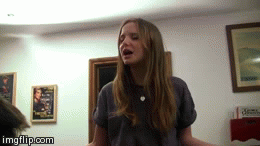Question 2: How does your media product represent particular social groups?
Our main focuses of representation were age and gender, which we aimed to provide both relatable, realistic, and modern representations of.
We both challenged and used conventional
representation in our opening.

Characters:
- Teenagers getting into trouble = Conformed
- Teenagers being in relationships = Conformed
- Strong female character
= Not Conformed
- Female with an interest in football
= Not Conformed
Age
Teenagers are often portrayed as troublemakers who party and drink, doing illegal activities like in British teenage drama Skins, where for example Sid buying drugs in the first episode of series 1.
We find out Dan is in trouble during our opening sequence's dialogue, possibly being involved in accidentally seriously hurting someone or even committing manslaughter.
We decided to not group characters into social groups like 'nerds', 'jocks', etc like in other dramas aimed at teenagers such as Beaver Falls, or in films such as Mean Girls as it would not have suited our context or our small cast. Another stereotype we challenged was the common representation of teenagers being involved in dealing or recreational use of drugs like in Ill Manors; we do not show any such behaviour from our characters or imply it.
Gender
Dan, our male character is the one who is in trouble, which does generally conform to stereotypes of young males, also similarly to characters like Sid and Freddie in the TV show Skins, which provides representations of teenagers in terms of both age and gender. More similarly to Freddie's character in Skins series 3 and 4, Dan also appears to have difficulties emotionally and within his relationship, made evident by Lucy saying "I don't want to be involved in your shit anymore".
 |
| Alisha in Misfits |
Lucy in 'Consequences'
|
Lucy challenges and develops, as well as conforms to stereotypes of females; she seems quite dominant in her relationship with Dan, but as one might expect to see, she is emotionally affected by the news about her brother. Some aspects of her character are more commonly associated with males; we see her watching football before Dan arrives, and uses physical body language and commanding tone when standing and pointing to say "get out!".
Gang culture being represented above in Attack the Block (left) and Bullet Boy (right)
As a collective....
Some common representations tie in across multiple aspects of representation, e.g. gang culture. This has reference to gender, class, age, race and setting; a negative stereotype being groups of young black males from disadvantaged social backgrounds, living in run-down inner city areas being involved in gang culture. This oversimplified and often incorrect interpretation of an extremely complex issue was a reason we steered away from gang culture as a theme we would tackle. We felt we could not sufficiently tackle gang culture as a theme also due to difficulty managing a large cast, and also our inconsistent understanding of it as a group.


No comments:
Post a Comment